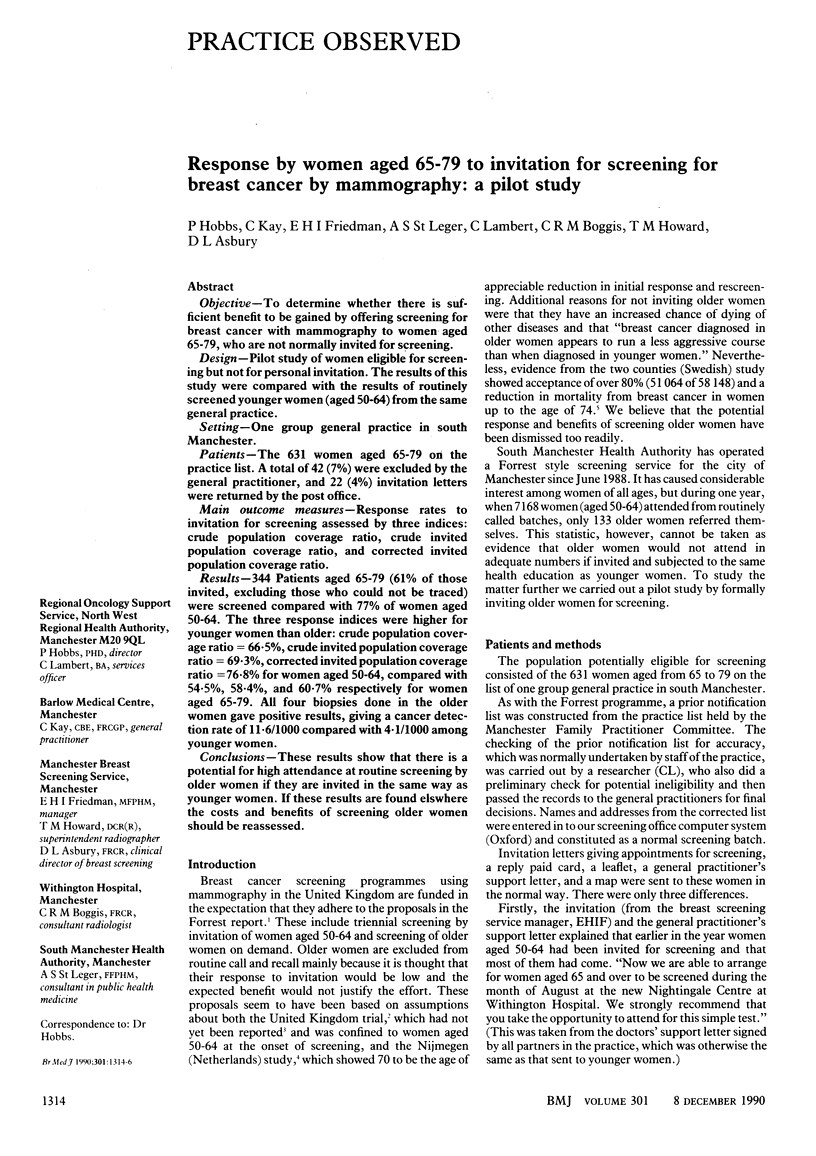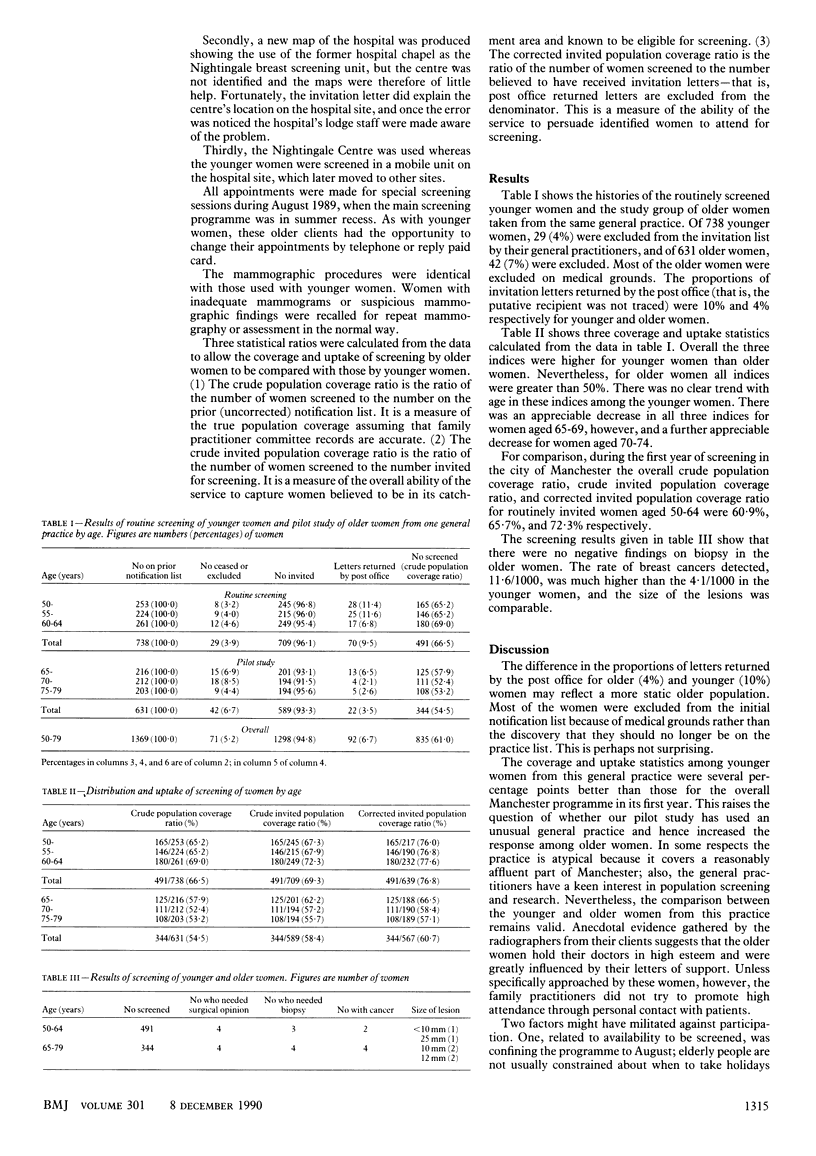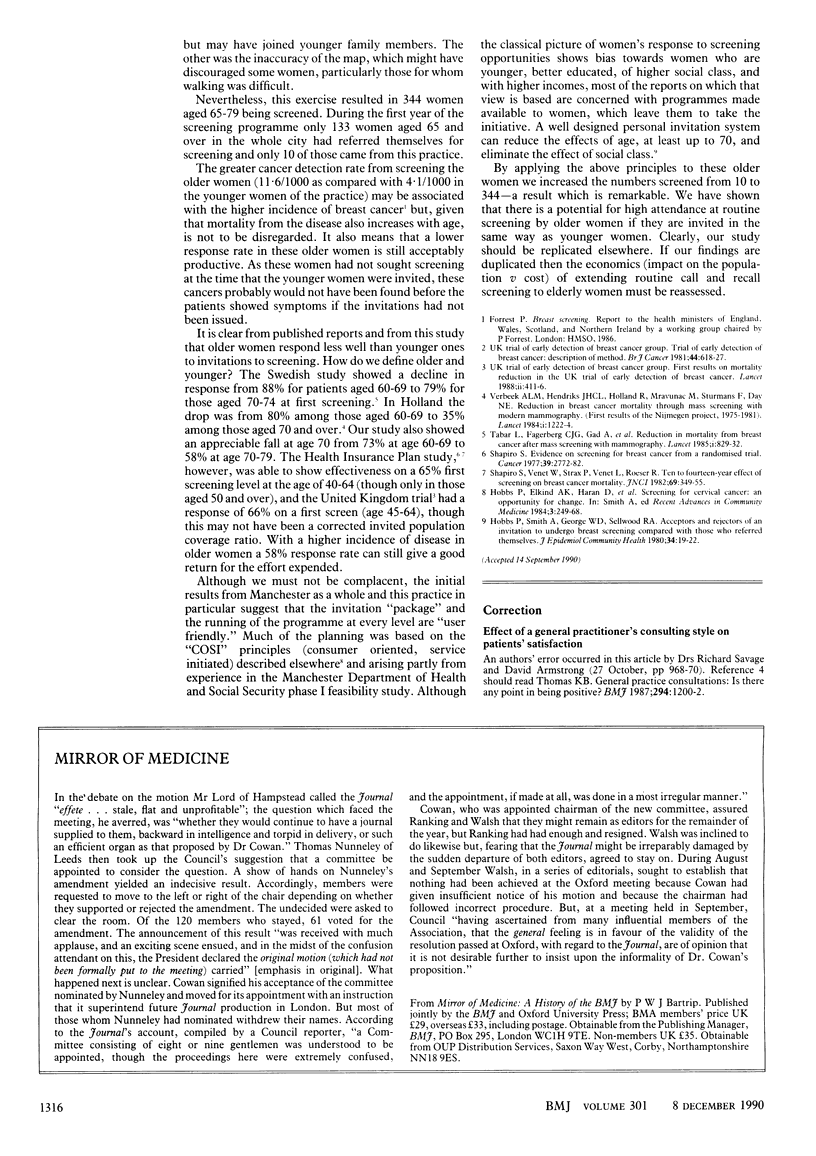Abstract
OBJECTIVE--To determine whether there is sufficient benefit to be gained by offering screening for breast cancer with mammography to women aged 65-79, who are not normally invited for screening. DESIGN--Pilot study of women eligible for screening but not for personal invitation. The results of this study were compared with the results of routinely screened younger women (aged 50-64) from the same general practice. SETTING--One group general practice in south Manchester. PATIENTS--The 631 women aged 65-79 on the practice list. A total of 42 (7%) were excluded by the general practitioner, and 22 (4%) invitation letters were returned by the post office. MAIN OUTCOME MEASURES--Response rates to invitation for screening assessed by three indices: crude population coverage ratio, crude invited population coverage ratio, and corrected invited population coverage ratio. RESULTS--344 Patients aged 65-79 (61% of those invited, excluding those who could not be traced) were screened compared with 77% of women aged 50-64. The three response indices were higher for younger women than older: crude population coverage ratio = 66.5%, crude invited population coverage ratio = 69.3%, corrected invited population coverage ratio = 76.8% for women aged 50-64, compared with 54.5%, 58.4%, and 60.7% respectively for women aged 65-79. All four biopsies done in the older women gave positive results, giving a cancer detection rate of 11.6/1000 compared with 4.1/1000 among younger women. CONCLUSIONS--These results show that there is a potential for high attendance at routine screening by older women if they are invited in the same way as younger women. If these results are found elsewhere the costs and benefits of screening older women should be reassessed.
Full text
PDF


Selected References
These references are in PubMed. This may not be the complete list of references from this article.
- Hobbs P., Smith A., George W. D., Sellwood R. A. Acceptors and rejectors of an invitation to undergo breast screening compared with those who referred themselves. J Epidemiol Community Health. 1980 Mar;34(1):19–22. doi: 10.1136/jech.34.1.19. [DOI] [PMC free article] [PubMed] [Google Scholar]
- Shapiro S. Evidence on screening for breast cancer from a randomized trial. Cancer. 1977 Jun;39(6 Suppl):2772–2782. doi: 10.1002/1097-0142(197706)39:6<2772::aid-cncr2820390665>3.0.co;2-k. [DOI] [PubMed] [Google Scholar]
- Shapiro S., Venet W., Strax P., Venet L., Roeser R. Ten- to fourteen-year effect of screening on breast cancer mortality. J Natl Cancer Inst. 1982 Aug;69(2):349–355. [PubMed] [Google Scholar]
- Tabár L., Fagerberg C. J., Gad A., Baldetorp L., Holmberg L. H., Gröntoft O., Ljungquist U., Lundström B., Månson J. C., Eklund G. Reduction in mortality from breast cancer after mass screening with mammography. Randomised trial from the Breast Cancer Screening Working Group of the Swedish National Board of Health and Welfare. Lancet. 1985 Apr 13;1(8433):829–832. doi: 10.1016/s0140-6736(85)92204-4. [DOI] [PubMed] [Google Scholar]
- Verbeek A. L., Hendriks J. H., Holland R., Mravunac M., Sturmans F., Day N. E. Reduction of breast cancer mortality through mass screening with modern mammography. First results of the Nijmegen project, 1975-1981. Lancet. 1984 Jun 2;1(8388):1222–1224. doi: 10.1016/s0140-6736(84)91703-3. [DOI] [PubMed] [Google Scholar]


